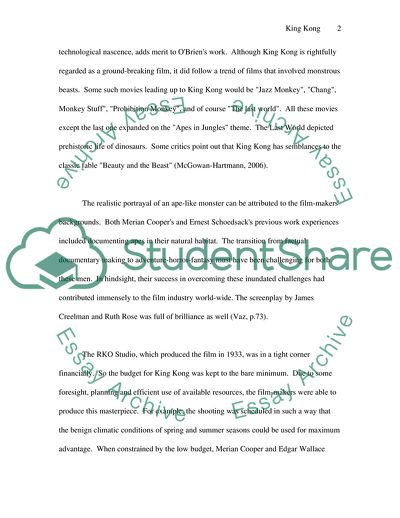Cite this document
(King Kong Assignment Example | Topics and Well Written Essays - 2500 words, n.d.)
King Kong Assignment Example | Topics and Well Written Essays - 2500 words. https://studentshare.org/visual-arts-film-studies/1709822-choosing-to-focus-on-one-film-king-kong-in-particular-detail-demonstrate-how-the-film-is-representative-of-classical-hollywood-cinema
King Kong Assignment Example | Topics and Well Written Essays - 2500 words. https://studentshare.org/visual-arts-film-studies/1709822-choosing-to-focus-on-one-film-king-kong-in-particular-detail-demonstrate-how-the-film-is-representative-of-classical-hollywood-cinema
(King Kong Assignment Example | Topics and Well Written Essays - 2500 Words)
King Kong Assignment Example | Topics and Well Written Essays - 2500 Words. https://studentshare.org/visual-arts-film-studies/1709822-choosing-to-focus-on-one-film-king-kong-in-particular-detail-demonstrate-how-the-film-is-representative-of-classical-hollywood-cinema.
King Kong Assignment Example | Topics and Well Written Essays - 2500 Words. https://studentshare.org/visual-arts-film-studies/1709822-choosing-to-focus-on-one-film-king-kong-in-particular-detail-demonstrate-how-the-film-is-representative-of-classical-hollywood-cinema.
“King Kong Assignment Example | Topics and Well Written Essays - 2500 Words”. https://studentshare.org/visual-arts-film-studies/1709822-choosing-to-focus-on-one-film-king-kong-in-particular-detail-demonstrate-how-the-film-is-representative-of-classical-hollywood-cinema.


